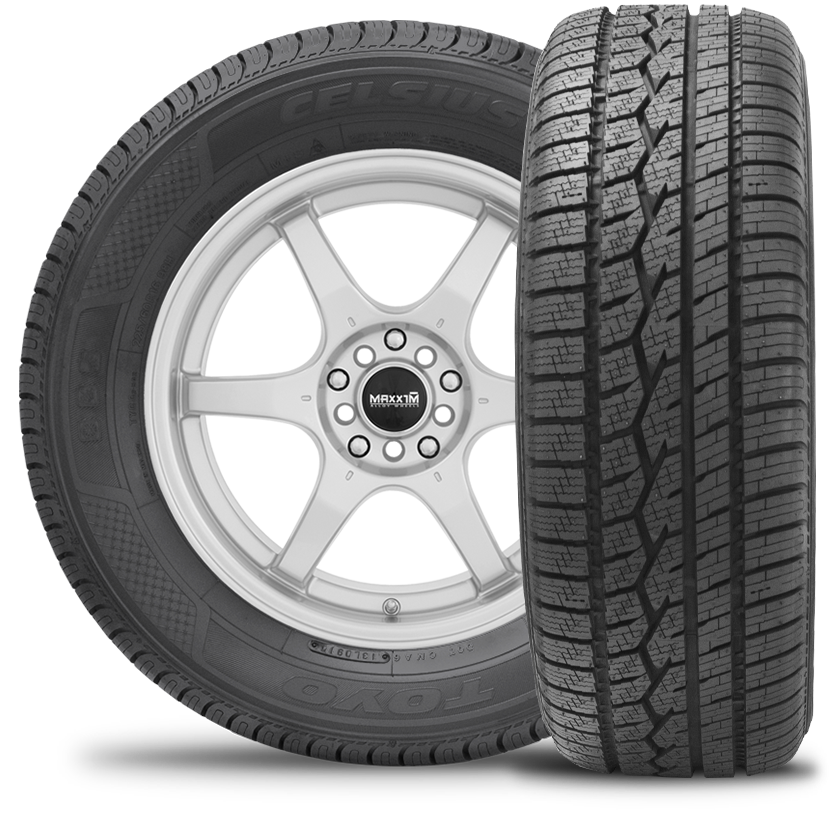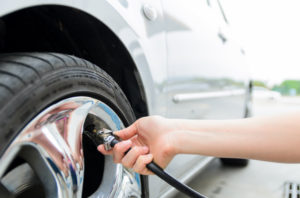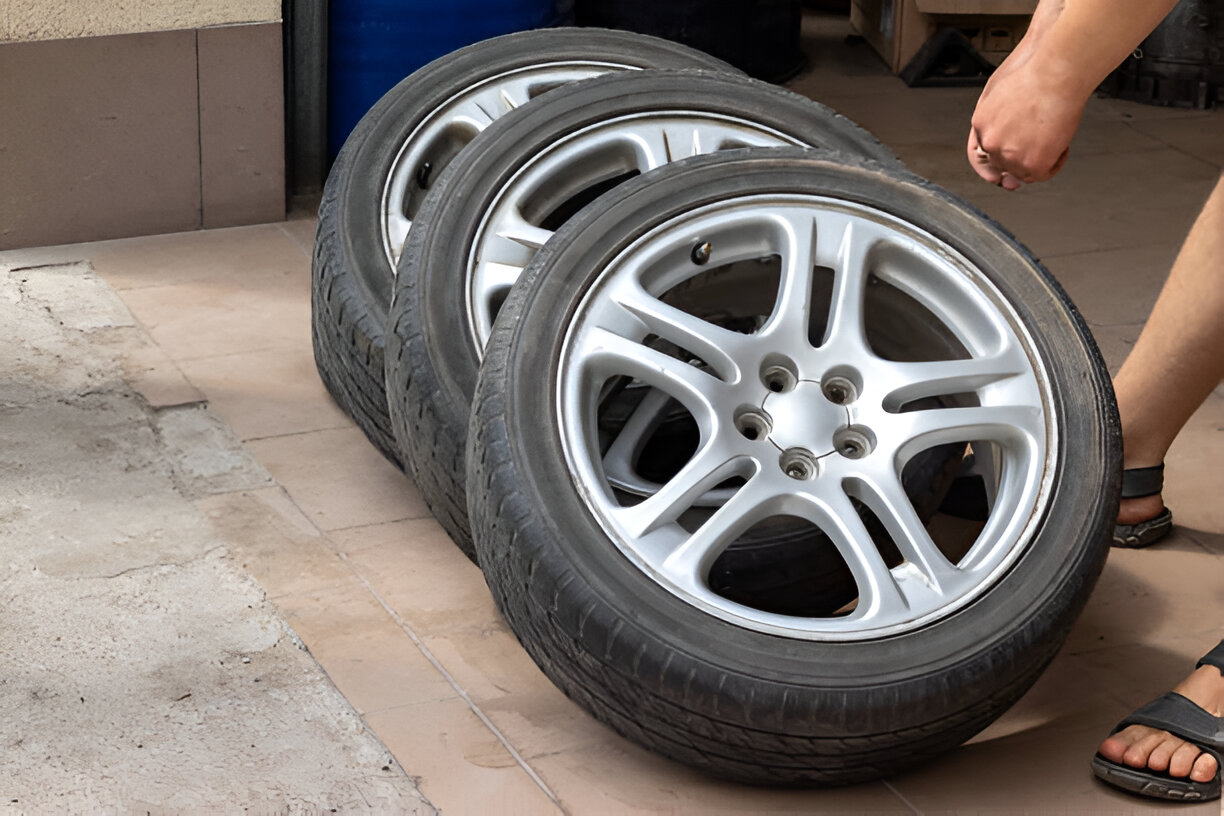Last Updated on July 29, 2025
Deep Dive into the World of Trailer Tires
Selecting the right tire for your trailer can seem monumental, especially with the buzz around bias and radial tires. Both bring unique features to the table, and understanding their differences is paramount. Let’s dive deep into the world of these tires, dissecting each to determine the ideal pick for your trailer.
Bias and radial tires are constructed differently and manufactured with different materials.
The Evergreen Charm of Bias Trailer Tires
Bias ply tires are made with alternating diagonal layers of rubberized nylon or polyester netting laid down at a 30 to 45-degree angle to the center line of the tire. Fiberglass belts are usually added to enhance strength.
Bias Tire Characteristics:
- Bias tires are less expensive than radial tires.
- Bias tires can carry heavy loads.
- Bias tires do fine when going in a straight line, but they do not perform well on curves. That’s because the pressure of the load pushes down on the tires and changes their shape on the road.
- Bias tires are also susceptible to abrasion and heat because of the shape change.
Bias tires, having graced the tire industry for years, represent durability and tradition. But what underlies their persistent appeal in the trailer tire market?
Features and Benefits of Bias Tires
- Cross Ply Construction:
- Nylon layers intersect each other at specific angles, forming a crisscross pattern. This design fortifies the tire, granting it unparalleled structural strength and resilience.
- Robust Sidewall Design:
- Renowned for their hardiness, bias tire sidewalls are adept at resisting punctures, making them the go-to choice for rugged terrains and demanding environments.
- Tread Longevity Considerations:
- While they pack a punch in terms of performance, bias tires might wear out more rapidly than radials, especially under constant highway usage.
Embracing the Modernity of Radial Trailer Tires
Overlapping polyester cords make radial tires at a 90-degree angle to the center line of the tire, then strengthened with steel mesh belts.
Radial Tire Characteristics:
- Radial tires provide a smoother, quieter ride.
- Radial tires track the pulling vehicle well, so there is better sway control on curves.
- Radial tires run cooler because their steel mesh dissipates heat, reducing the chance of a blowout and adding to the tire’s life.
- Radial tires have a wider footprint, spreading tread wear and adding to the tire’s life.
- Radial tires are more resistant to punctures.
- Radial tires provide better fuel economy because they have less rolling resistance.
- Modern ST radial tires are reinforced and designed for heavy loads.
As the newer entrants in the tire game, radial tires promise cutting-edge features backed by recent technological advancements. Their rising popularity speaks volumes of their efficacy.

Characteristics of Radial Tires
- Perpendicular Ply Construction:
- The design here is distinct, with steel belts running perpendicular to the tire’s direction. This structure allows for a smoother ride as the tire flexes more and maintains consistent road contact.
- Superior Tread Life:
- Radial tires stand out for their longevity. Their extended tread life ensures fewer tire changes, translating to notable long-term savings.
- Efficient Heat Management:
- Radials are designed to dissipate heat more effectively than their biased counterparts. This feature minimizes blowout risks, especially during prolonged drives.
Bias or Radial: The Deciding Factors
With both tire types offering compelling benefits, the decision refers to individual needs and specific conditions.
Considerations for Selection
- Usage Patterns:
- Trailers that operate infrequently or primarily on short routes might find bias tires adequate. However, radial tires have become preferred for regular or long-distance hauls.
- Terrain Type:
- Rough, unpredictable terrains resonate with the protective nature of bias tires. Conversely, smoother roads and highways beckon the touch of radial tires.
- Budgetary Constraints:
- Initial costs for radial tires might be higher, but their longevity often makes them a more economical choice throughout their life span.
It is clear that radial tires perform better and have a longer life than bias tires. However, bias tires cost less, and even though they must be replaced more often, many trailer owners don’t consider that important because they don’t use their trailers very often anyway.
Guaranteeing a Flawless Trailer Experience
Picking the right tire goes beyond mere aesthetics or initial costs. It’s a decision that affects your trailer’s performance, safety, and efficiency.
The Impact of the Right Tire Choice
- Safety Protocols:
- A fitting tire, whether biased or Radial, ensures on-road safety. It’s instrumental in preventing punctures and reducing risks related to blowouts.
- Performance Metrics:
- The correct tire ensures optimal stability, traction, and comfort, enhancing the driving and towing experience.
- Economical Implications:
- Beyond the initial purchase cost, the right tire can lead to fuel savings, reduced maintenance bills, and a longer lifespan.
Charting Your Path in the Trailer Tire Terrain
It’s time for new trailer tires, and one of your decisions is whether to purchase bias or radial tires.
That decision generally boils down to whether price is most important or whether you are more concerned about how the tires handle on the road.
Bias tires are less expensive. Trailer owners sometimes say that because trailer tires are followers, that is, they follow behind the vehicle that pulls them, better performance is not as critical as it would be for the car that pulls the trailer. The vehicle in the front does all the fancy work, while the trailer in the back mostly rolls forward.
Radial tires, however, do perform better than bias tires, and that performance is quickly noticeable.
The ride is smoother, the trailer does not bounce and sway as much, and radial tires have a longer life.
The most important characteristic of any trailer tire is its ability to carry a heavy load. In the past, bias tires were known to carry heavier loads than radial tires. That has changed. Nowadays, radial trailer tires are designated with the “ST” label in their name, short for Special Trailer, and they are built to carry heavy loads. You might consider looking at ST radial tires if you have used bias tires for years because of their load capacity.
Conclusion
Armed with knowledge, you’re now poised to make a decision that aligns with your needs and augments your trailer’s capabilities. Whether you gravitate towards bias or Radial, remember it’s all about finding the perfect synergy between the tire and your trailer’s demands.
Ready to elevate your towing experience?
Dive into our extensive collection of both bias and radial trailer tires.
Tires-easy boasts a wide range of radial and bias trailer tires at great prices.
Discover the best at Tires Easy and embark on every journey with confidence and peace of mind!
-
Automotive Specialist
-
Proofreader
-
Writer









